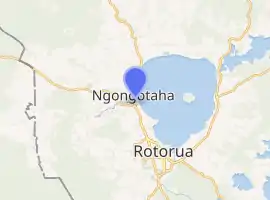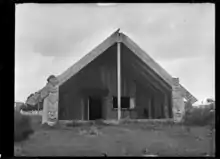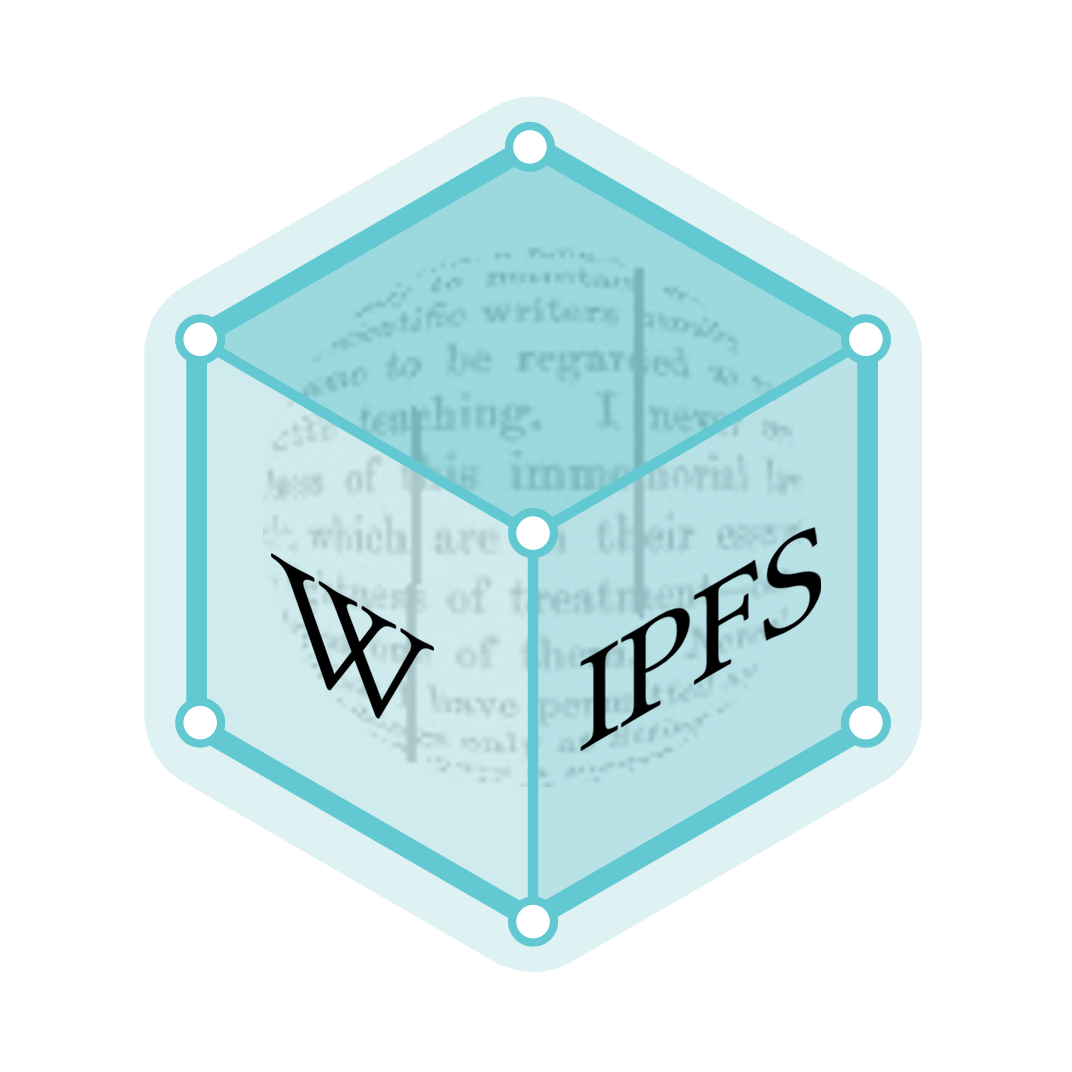Ngongotahā
Ngongotahā is a town on the western shores of Lake Rotorua in New Zealand's North Island. It is 10 kilometers northwest of Rotorua city, and is often regarded as an outer suburb of the larger centre. Its population was 4,107 in the 2013 census.[2]
Ngongotahā | |
|---|---|
Suburb | |

| |
| Country | New Zealand |
| Local authority | Rotorua Lakes |
| Electoral ward | North |
| Population (June 2020)[1] | |
| • Total | 5,210 |
| Hamurana | ||
| Mamaku |
|
(Lake Rotorua) |
| Ngongotahā Valley | Selwyn Heights | Fairy Springs |
Its name is derived from a legend of Ihenga, the famous Māori explorer. It is said Īhenga met the Patu-paiarehe on Mount Ngongotahā and was offered a drink from a calabash. Ngongo means "to drink", and tahā means "calabash".[3] Ngongotahā is often referred to by locals as the "Sunny side of the Mountain".
Demographics
| Year | Pop. | ±% p.a. |
|---|---|---|
| 2006 | 4,062 | — |
| 2013 | 4,254 | +0.66% |
| 2018 | 4,872 | +2.75% |
| Source: [4] | ||
Ngongotahā, comprising the statistical areas of Ngongotahā East, Ngongotahā West and Ngongotahā South, had a population of 4,872 at the 2018 New Zealand census, an increase of 618 people (14.5%) since the 2013 census, and an increase of 810 people (19.9%) since the 2006 census. There were 1,773 households. There were 2,388 males and 2,478 females, giving a sex ratio of 0.96 males per female, with 1,023 people (21.0%) aged under 15 years, 867 (17.8%) aged 15 to 29, 2,088 (42.9%) aged 30 to 64, and 888 (18.2%) aged 65 or older.
Ethnicities were 68.2% European/Pākehā, 41.9% Māori, 5.5% Pacific peoples, 4.2% Asian, and 1.6% other ethnicities (totals add to more than 100% since people could identify with multiple ethnicities).
The proportion of people born overseas was 14.3%, compared with 27.1% nationally.
Although some people objected to giving their religion, 52.2% had no religion, 34.9% were Christian, 0.4% were Hindu, 0.2% were Muslim, 0.2% were Buddhist and 4.3% had other religions.
Of those at least 15 years old, 618 (16.1%) people had a bachelor or higher degree, and 804 (20.9%) people had no formal qualifications. The employment status of those at least 15 was that 1,812 (47.1%) people were employed full-time, 576 (15.0%) were part-time, and 168 (4.4%) were unemployed.[4]
| Name | Population | Median age | Median income |
|---|---|---|---|
| Ngongotahā East | 1,926 | 39.5 years | $26,900[5] |
| Ngongotahā West | 1,527 | 37.3 years | $27,100[6] |
| Ngongotahā South | 1,419 | 43.7 years | $28,900[7] |
| New Zealand | 37.4 years | $31,800 |
Marae

Ngongotahā has six marae.
Te Awawherowhero Marae is affiliated with the Ngāti Whakaue hapū of Ngāti Rautao.
Parawai Marae and its Whatumairangi meeting house are affiliated with the Ngāti Whakaue hapū of Ngāti Tuteaiti and Te Whatumairangi, and Te Ure o Uenukukōpako hapū of Ngāti Te Ngākau and Ngāti Tura.
Tarimano Marae and Tawakeheimoa meeting house are affiliated with the Ngāti Rangiwewehi hapū of Ngāti Rangiwewehi ki Uta. In October 2020, the Government committed $4,525,104 from the Provincial Growth Fund to upgrade the marae and nine others, creating an estimated 34 jobs.[8]
Tārukenga Marae and Te Ngākau meeting house are affiliated with the Ngāti Whakaue hapū of Ngāti Te Ngakau and Ngāti Tura, and Te Ure o Uenukukōpako's hapū of Ngāti Te Ngākau and Ngāti Tura.
Waikuta Marae and its Rangitunaeke meeting house are affiliated with the Ngāti Whakaue hapū of Ngāti Rangitunaeke.
Waitetī or Weriweri Marae and its Ngāraranui meeting house are affiliated with the Ngāti Whakaue hapū of Ngāti Ngāraranui, and Te Ure o Uenukukōpako hapū of Ngāti Ngāraranui.[9][10] In October 2020, the Government committed $372,420 from the Provincial Growth Fund to upgrade the marae, and create 20 jobs.[8]
Mount Ngongotahā
Mount Ngongotahā is 757 metres (2,484 ft) high. It towers above the city; and hosts a Gondola to the top where there is a viewing platform, luge and restaurant.[11]
Sports
The village has strong football (Ngongotaha AFC), rugby league (Ngongotaha Sports & Community Association), rugby union, netball and touch teams.
Economy and transportation
The main road through the village, known as SH 36, runs via Kaharoa and Pyes Pa to Tauranga.
The Rotorua Branch railway runs through Ngongotahā, although this has been unused since the turn of the century. A Railway Park, run by enthusiasts, provides train rides on a scale model steam train and a mini diesel-locomotive on the Western side of Ngongotahā near the former line.[12]
The Ngongotahā Stream, which flows through the village centre and onward into Lake Rotorua is one of the most heavily fished areas in New Zealand. Specimen rainbow trout and brown trout are regularly taken by fly fishermen. Other nearby streams (Awahou, Waiteti and Hamurana) also offer good fishing.
Education
Ngongotaha School is a co-educational state primary school for Year 1 to 6 students,[13][14] with a roll of 363 as of March 2020.[15]
Notable people
Despite its small size, Ngongotahā has produced a number of famous New Zealanders, including:
- Temuera Morrison, actor
- Phillip Orchard, New Zealand international rugby league player (1960s—1970s)
- Robert Orchard, New Zealand international rugby league player (1960s—1970s)
- Jeremy Paul, Australian international rugby player, a 1999 World Cup winner
- Hika Reid, New Zealand international rugby union player 1980–1986
- Ron Russell, Canadian politician
References
- "Population estimate tables - NZ.Stat". Statistics New Zealand. Retrieved 22 October 2020.
- The population is the total of Ngongotahā North 2013 Census QuickStats about a place : Ngongotahā North and Ngongotahā South 2013 Census QuickStats about a place : Ngongotahā South
- Cowan, James (1925). Fairy Folk Tales of the Maori. New Zealand: Whitcombe and Tombs Limited. p. 37.
- "Statistical area 1 dataset for 2018 Census". Statistics New Zealand. March 2020. Ngongotaha East (198100), Ngongotaha West (198200) and Ngongotaha South (198400).
- 2018 Census place summary: Ngongotahā East
- 2018 Census place summary: Ngongotahā West
- 2018 Census place summary: Ngongotahā South
- "Marae Announcements" (Excel). growregions.govt.nz. Provincial Growth Fund. 9 October 2020.
- "Te Kāhui Māngai directory". tkm.govt.nz. Te Puni Kōkiri.
- "Māori Maps". maorimaps.com. Te Potiki National Trust.
- "Skyline Rotorua". Skyline Rotorua. 2019.
- "Miniature Railway at Ngongotaha". Retrieved 1 December 2015.
- "Official School Website". ngongotaha.school.nz.
- "Ministry of Education School Profile". educationcounts.govt.nz. Ministry of Education.
- "Education Review Office Report". ero.govt.nz. Education Review Office.
